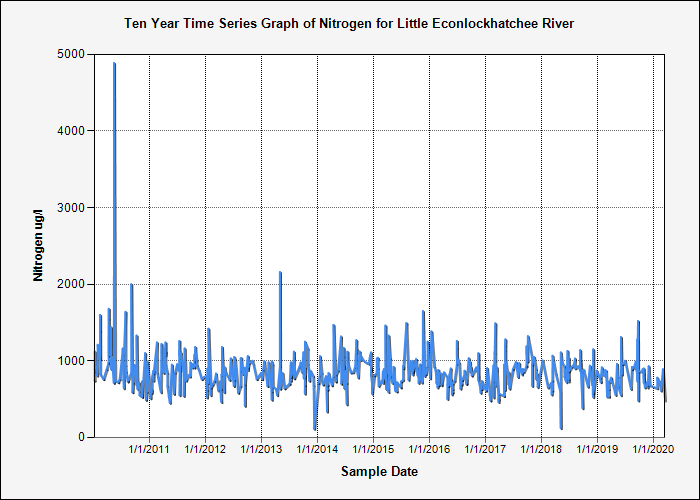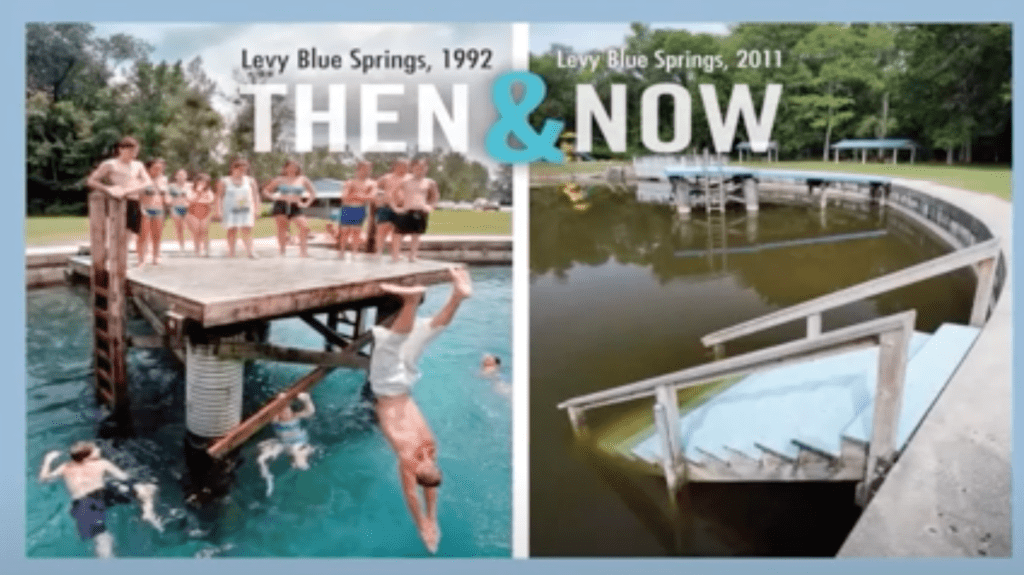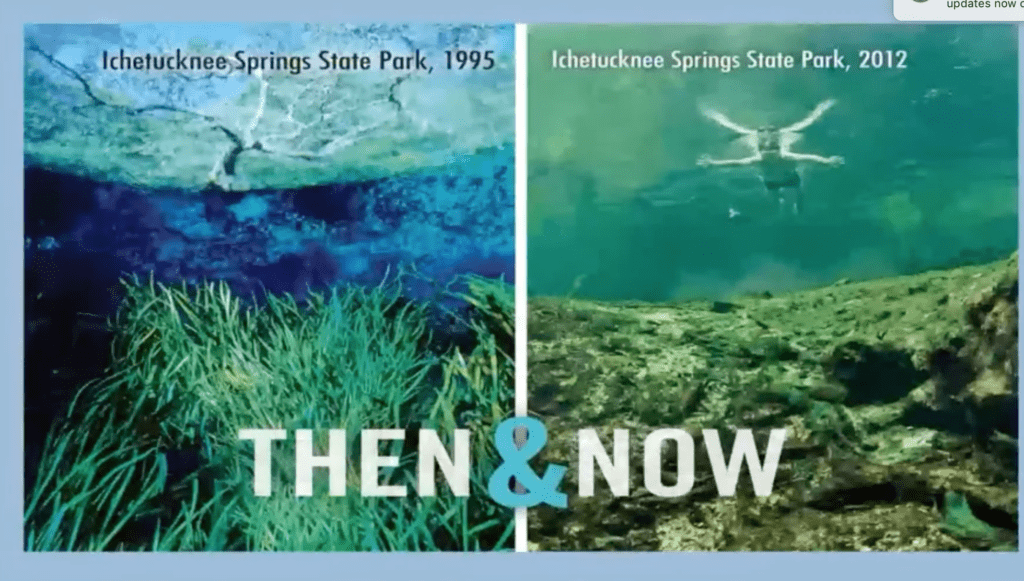The Right to Clean Water Charter Amendment
The Right to Clean Water Charter Amendmen: your water, your charter, your home. If you are opting for mail-in voting, then this is already heading towards your home, even as this is being typed. For the residents of Orange County Florida, there will appear three charter amendments on the November 3, 2020 ballot. Chuck O’Neal, who is the president of the Right to Clean Water political committee, spoke about charter amendment one, which concerns the Right to Clean Water(1). O’Neal has served as the Chairman of the Natural Resources Committee, helped organize Speak Up Wekiva, and was the First Vice President of the League of Women Voters of Florida. This charter will be the first of its kind in the state of Florida, and it is the first time for a county to consider this type of charter within the nation.
After being proposed in June of 2019 to the fifteen-member panel of the Charter Review Commission, the charter was reviewed over eleven meetings. The final version was finally agreed upon and submitted to the supervisor of elections in July of 2020. So, what is the charter?
As O’Neal says, the heart of the charter is: “The Wekiva River, the Econlockhatchee River, and all other bodies of water in Orange County have the right to exist, flow (healthy water levels), to be protected against pollution, and maintain a healthy ecosystem.”
Before explaining exactly the charter in detail, O’Neal shows an image from the United States Geological Survey(2). It is an image of our planet, paused over North America. There are three blue spheres, with the largest one representing all of the water on the planet. That’s water in the ocean, ice caps, rivers, lakes, even in organisms, including you reading this. The diameter of this sphere is 860 miles wide. The second sphere is all of the world’s freshwater. It is made up of water from all the rivers, lakes, springs, groundwater, and swamps. The diameter of this freshwater sphere is about 169 miles wide. And then just below that, almost indiscernible, is the accessible freshwater (rivers and underground aquifers) that is available for humans to drink and is only 35 miles wide (but about 35 miles in height). O’Neal says he “always likes to start with this slide because it puts it into the perspective of why water is so important.”
O’Neal goes on to use an analogy of a pool and septic tank to demonstrate just how much nitrate is in our freshwater water springs. Imagine a standard 33,000-gallon swimming pool, full of people. Then someone goes over to a septic tank with a one-gallon jug, fills it up from the contents of the septic tank, and then returns to the pool, pouring that gallon fresh from the septic tank, into the pool. O’Neal poses the question: “How many people would stay in the pool with that one gallon of septic tank water?” What about 10 gallons of septic tank water were put into the pool? Would people stay swimming? O’Neal thinks, most likely not. In comparison to that, the nitrate concentration in Wekiva Springs is equal to a standard 33,000 gallon swimming pool with 750 gallons of septic tank water. So that gives you an idea of the cleanliness of the water in Wekiva Springs, and it gives a close idea to the concentration levels in Wekiva River and Econlockhatchee River.
So what does all the nitrate do? Well, it gets in the water and feeds the growth of algae, and the algae builds up on the eelgrass. Once on the eelgrass, it blocks any light from touching the eelgrass, killing it. Why is eelgrass important? It is where fish lay eggs. If there isn’t any eelgrass, then the population of fish reduces, and the entire water system becomes unhealthy. The presence of the level of nitrate found in Wekiva and the Econ is dangerous for any kind of life.
Healthy eelgrass: photo by John Moran
O’Neal goes on to show just how much nitrogen appears in the Wekiva and Econlockhatchee Rivers, in the line graphs (3 and 4) below. On both of these graphs, the safe level of nitrates is shown at .286, which is way down at the bottom. The blue line is three to four times the maximum level of nitrates to promote a healthy life, healthy fish, and healthy people.
-

Source: Orange Water Atlas -

Source: Seminole Water Atlas
What are these high levels of nitrogen doing, and what does the algae growth look like? To show, O’Neal shares some photographs by John Moran (3) that show the same springs in the early 1990’s and what they look like today, within the last decade. The images below are more shocking and powerful than any words can describe, as they vividly show the loss of water clarity, plant life, and a healthy ecosystem.
How do the nitrates end up in the aquifer, turning the crystal clear springs into murky waters of algae? Take a look at this simple illustration of the water cycle, and how water gets into lakes and the ground.

The water travels down into the soil and the porous limestone that Florida is made up of, and into the water and aquifer that Florida is “bopping on” or built upon. Whatever goes into the ground, goes straight into that groundwater and aquifer. O’Neal then moved on to talking about how through the city and county, nitrates are being put into the springs. Source: Earth Observatory, NASA
The map of the Wekiva Basin Management Action Plan Area and Wekiva Springhead(4) shows where the water is coming from that comes out of Wekiva Springs, which is known as the spring shed. When rain falls or someone takes a garden hose or someone dumps wastewater, and puts it on the ground within this teardrop shape, the water filters down through the soil into the Upper Floridan aquifer. The water moves northeast and exits in the lowest points, which are the Florida springs. So anything that goes in the ground in that spring shed is moving towards the springs and exits through them, becoming part of the Wekiva River
On the map, there are red parts and those are the RIB (Rapid Infiltration Basin) Sites. This is where the wastewater from much of west Orange County and the City of Orlando comes out and enters into the Upper Floridan aquifer. This facility is known as Water Conserv II. This is important because if the water in the wastewater from west Orange County and the City of Orlando is high in nitrates, when it is dispersed to homeowners for lawn irrigation, and to citrus groves, what isn’t used is dumped into RIBs, which are large sandy pits. That water high in nitrates, drains down into the Upper Floridan aquifer and moves towards the springs.
Where are most of the nitrates coming from? The Nitrate Loadings to the Wekiva Basin chart(5) as seen below, shows what portion of what source goes into the springs. You can see over 90% of the nitrates going into the Upper Floridan aquifer are coming from those septic tanks. Septic tanks collect wastewater from houses, and it drains that wastewater down into the aquifer. This means a lot because you are drinking it. We are all essentially drinking what is coming out of the springs. Fertilizing also plays a huge role in nitrate levels. When you fertilize lawns, especially over fertilize them, the the high in nitrates fertilizers drains down into the aquifer. Commercial and agricultural fertilizers also play a big problem. And of course, the wastewater from the RIBs of Water Conserv II is also a big source of nitrates within the aquifer.
But now, O’Neal brings us back to the charter, by asking what is WEBOR? The Wekiva River and the Econlockhatchee River Bill of Rights and it is the start of what we call the Right to Clean Water in Orange County.
O’Neal has said that some people think it is ludicrous that we have to vote on this. But the fact remains that we must vote on this, as right now under our law, we do not have the right to clean water. The quality of our water is controlled largely by the state and the federal government. They tell corporations how much pollution they can put in the water that we are drinking from public waters. It is the legislature that decides up until a certain point, how many nitrates can be put into the water. Before ten milligrams of nitrates per liter of water, it’s not killing anybody. But once ten milligrams of nitrates per liter of water occurs, then it can be lethal to young children and the elderly.
O’Neal frankly states that “what we are saying in this and I hope the voters in Orange County, is that this is not acceptable. That is not an acceptable standard we live in.”
The Florida legislature that writes these laws allows this type of pollution in our waters are largely controlled by industries and the Florida Chamber of Commerce and Associated Industries of Florida. They are very wealthy organizations and corporations that put a lot of money and elect certain compensated individuals into office. Once they are in office, these industries write the laws that govern the pollution that enters our water to the best interests of the industries that are funding the lobbyists and funding the campaigns to those people who control the quality of our water.
In terms of why rivers don’t have rights, but people do, and a newly formed business in the state of Florida has rights, goes back to the formation of the constitution. When western immigrants from western Europe came to the US they brought with them the common law system, which we pretty much have today. Within the system, entities are either a person or a thing. If you are designated as a person, you have rights such as civil rights, the right to vote, and the right to own property. People have those rights, but things do not have rights. During the formation of the constitution, these rights were given to white land owning men. White men had rights, but no one else. They did not include people of color or women as rights-bearing persons. Over time our law has evolved. O’Neal goes on to point out that we have evolved in that we abolished slavery, women successfully fought for the right to vote and to be considered people (not property). O’Neale emphasizes we are still continuing to evolve, change, and fight for equality, even to this day.
In the mid-1800’s decisions were made by the supreme court that said people are people but corporations are people too, under the law. Anyone can go on Sunbiz right now, form a business, and within 10 minutes that corporation would have more rights than all the rights of rivers in the state of Florida right now. Even though these rivers have been here for thousands of years and our home to animals, these rivers are things, things underneath the law. When people say “oh you have to strike a balance between commerce and conserving the land,”
O’Neal says “what kind of balance do you have when a corporation has all the rights of a person and a river has absolutely no rights?”
The Right to Clean Water charter is an attempt to put the two on equal footing, where rivers have certain rights and corporations have certain rights. When talking about giving rights to water, we aren’t talking about seeing them as people. But the right to exist, flow, be free of pollutants, and be healthy.
Here is the exact wording:
A. Natural Rights of Orange County Waters and Citizens.
- (1) The Wekiva River and Econlockhatchee River, portions of which are within the boundaries of Orange County, and all other Waters within the boundaries of Orange County, have a right to exist, Flow, to be protected against Pollution and to maintain a healthy ecosystem.
- (2) All Citizens of Orange County have a right to clean water by having the Waters of Orange County protected against Pollution.(8)
Part C is extremely important as it concerns violations: “It shall be unlawful and a violation of this Section of the Charter for any governmental agency, non-natural person or corporate entity to intentionally or negligently pollute the Wekiva River and Econlockhatchee Rivers within the boundaries of Orange County, or any other Waters within the boundaries of Orange County.”(8) This means it would be prohibited to violate the rights of both the rivers and waters to pollute them, to cause them to be polluted. That becomes a violation of the charter if it passes.
As O’Neal explains, this violation would be a “violation of both my health and your health.” When the level of nitrates in our water is where they are today where they make people become sick, or develop cancers, we need to have the right to be able to go to corporations or governments that are purposely or negligibly polluting our waters and get them to stop. You may assume that we already have that right, to stop someone from dumping toxins – well no, we don’t have the right. If that company or industry is dumping toxins, if they have a permit, we don’t have the right to stop them, as long as they are acting within the parameters of that permit. Even if they are dumping wastewater with nitrates exceeding ten milligrams per liter of water into our groundwater, if it is within their permit, they cannot be touched or sued as it currently stands.
O’Neal anticipates that once the charter passes, it will act as a challenge to those major companies that are polluting the water. His hope is that companies see this as a powerful tool that can be used by any citizen in Orange County. The companies know they are polluting water, but citizens can’t fight them. But now, with the charter, citizens will have a way of filing suit in Orange County against those polluters. According to O’Neal, companies can decide to take pollution out of the water before putting it in rivers or groundwater, but right now, it is not cost-effective for them. O’Neal sees the charter as a possible incentive to hire somebody to build a plant or a system that cleans up their water before it is discharged. He goes on to say that perhaps what corporations need to do is pay into a system that cleans that water, whether naturally through aquatic plants that take up nitrates or a mechanical system that cleans it up.
With 21.5 million people in the state of Florida, and all the wastewater, septic tanks, wastewater facilities, O’Neal believes we have to start doing something different and to create a new way to look at things. That means giving rights to entities beyond people and corporations.
Want to learn more about the Right to Clean Water charter? Visit the Right to Clean Water 2020 website and find out more about the amendment, how to get signage, and when to vote.
Feeling inspired to help fight for the Right to Clean Water? Volunteer with the committee and make your voice heard. Be sure to like, share, and follow Rights to Clean Water on Social Media:
Instagram: @righttocleanwater
Facebook: Right To Clean Water
Sources:
- https://righttocleanwater2020.com
- https://www.usgs.gov/media/images/all-earths-water-a-single-sphere
- http://orange.wateratlas.usf.edu/graphs20/graph_it.aspx?wbodyid=1013&data=TN_ugl&datatype=WQ&waterbodyatlas=bay&ny=10
- http://seminole.wateratlas.usf.edu/graphs20/graph_it.aspx?wbodyid=1011&data=TN_ugl&datatype=WQ&waterbodyatlas=bay&ny=10
- https://www.johnmoranphoto.com
- https://floridadep.gov/sites/default/files/Wekiwa%20and%20Rock%20Springs%20Final%202018.pdf
- http://www.floridahealth.gov/environmental-health/onsite-sewage/research/_documents/final-report-2010-wekiva-basin-nitrate-sourcing-fr0310.pdf
- http://www.speakupwekiva.com/WEBOR.html
Feature image by: Bart Everson












